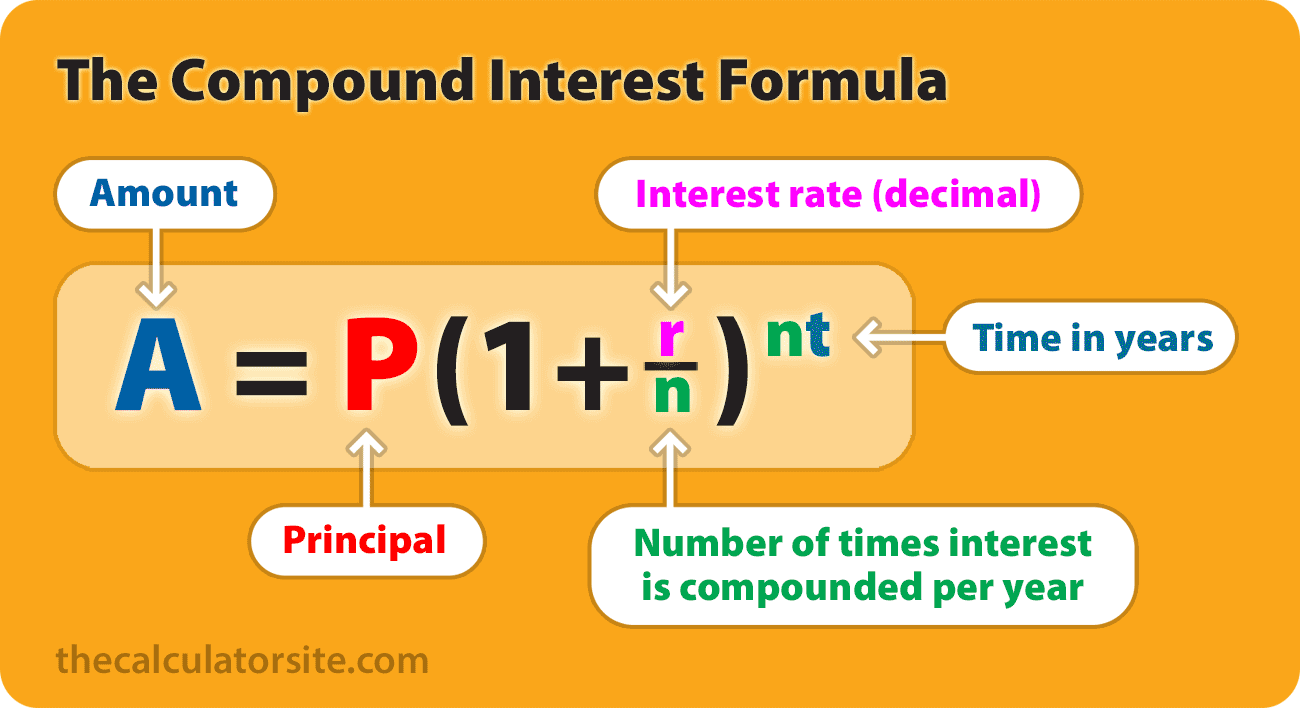
The Power of Compound Interest: Understanding and Illustrative Examples
Compound interest, often hailed as the "eighth wonder of the world," is a financial concept that can significantly impact your long-term savings, investments, and even debts. It’s the interest earned not only on the initial principal but also on the accumulated interest from previous periods. In simpler terms, it’s interest earning interest. Understanding compound interest is crucial for anyone seeking to grow their wealth, plan for retirement, or make informed financial decisions.
What is Compound Interest?
At its core, compound interest is the snowball effect applied to your money. Unlike simple interest, which is calculated only on the principal amount, compound interest factors in the accumulated interest as well. This means that with each compounding period, your money grows at an increasingly faster rate.
The formula for calculating compound interest is:
A = P (1 + r/n)^(nt)
Where:
- A = the future value of the investment/loan, including interest
- P = the principal investment amount (the initial deposit or loan amount)
- r = the annual interest rate (as a decimal)
- n = the number of times that interest is compounded per year
- t = the number of years the money is invested or borrowed for
Breaking Down the Formula:
Let’s dissect each component of the formula to gain a clearer understanding:
- Principal (P): This is the starting amount of money you invest or borrow. The higher the principal, the larger the base on which interest is calculated, and the faster your money will grow.
- Interest Rate (r): This is the percentage of the principal that is charged as interest per year. A higher interest rate leads to more significant gains (or higher costs for loans). It’s crucial to shop around for the best interest rates when investing or borrowing.
- Compounding Frequency (n): This refers to how often the interest is calculated and added to the principal within a year. Interest can be compounded annually (once a year), semi-annually (twice a year), quarterly (four times a year), monthly (12 times a year), daily (365 times a year), or even continuously. The more frequently interest is compounded, the faster your money grows because you’re earning interest on interest more often.
- Time (t): This is the duration of the investment or loan in years. The longer the money remains invested, the more time compound interest has to work its magic, leading to exponential growth.
Illustrative Examples of Compound Interest
To truly appreciate the power of compound interest, let’s explore some practical examples:
Example 1: The Long-Term Investor
Imagine two individuals, Sarah and Tom. Both are 25 years old and decide to start investing for retirement.
- Sarah: Starts investing $5,000 per year in a retirement account that earns an average annual return of 8%, compounded annually. She continues this for 40 years, until she retires at age 65.
- Tom: Procrastinates and doesn’t start investing until he is 35 years old. He invests the same amount, $5,000 per year, at the same 8% annual return, compounded annually, but only for 30 years.
Let’s calculate their retirement savings:
- Sarah: A = 5000 (1 + 0.08/1)^(1*40) = $1,449,737.57
- Tom: A = 5000 (1 + 0.08/1)^(1*30) = $566,416.23
Despite investing the same amount annually at the same rate, Sarah ends up with significantly more money than Tom due to the power of compounding over a longer period. Sarah invested for 10 years longer than Tom, but that extra time resulted in over $883,000 difference! This highlights the importance of starting early.
Example 2: The Impact of Compounding Frequency
Let’s say you invest $10,000 in a certificate of deposit (CD) that offers a 5% annual interest rate. We’ll compare the future value of the CD after 5 years with different compounding frequencies:
- Annually (n = 1): A = 10000 (1 + 0.05/1)^(1*5) = $12,762.82
- Quarterly (n = 4): A = 10000 (1 + 0.05/4)^(4*5) = $12,820.37
- Monthly (n = 12): A = 10000 (1 + 0.05/12)^(12*5) = $12,833.59
- Daily (n = 365): A = 10000 (1 + 0.05/365)^(365*5) = $12,840.03
As you can see, the more frequently the interest is compounded, the higher the final amount. While the difference might seem small in this example, over longer periods and with larger principal amounts, the impact of compounding frequency becomes more significant.
Example 3: The Downside of Compounding Debt
Compound interest isn’t just beneficial for investments; it can also work against you when it comes to debt. Credit card debt is a prime example. Let’s say you have a credit card balance of $5,000 with an annual interest rate of 18%, compounded monthly. If you only make the minimum payment each month, it could take you years to pay off the balance, and you’ll end up paying significantly more than the original $5,000 due to the compounding interest.
Why Compound Interest Matters
- Wealth Accumulation: Compound interest is a powerful tool for building wealth over time. By starting early, investing consistently, and choosing investments with reasonable returns, you can harness the power of compounding to achieve your financial goals.
- Retirement Planning: As demonstrated in the first example, compound interest is essential for retirement planning. The earlier you start saving and investing, the more time your money has to grow, allowing you to accumulate a substantial nest egg for your future.
- Financial Literacy: Understanding compound interest is a fundamental aspect of financial literacy. It empowers you to make informed decisions about savings, investments, loans, and debt management.
- Long-Term Growth: It allows for long-term, sustainable growth of investments, helping individuals achieve financial security and independence.
- Understanding Debt: Recognizing how compounding works with debt (like credit cards) can help you avoid financial pitfalls and develop strategies for managing and paying down debt effectively.
Tips for Maximizing Compound Interest
- Start Early: The earlier you start investing, the more time your money has to grow.
- Invest Consistently: Regular contributions to your investment accounts, even small amounts, can significantly boost your returns over time.
- Reinvest Dividends and Earnings: If your investments generate dividends or other earnings, reinvest them to further accelerate the compounding process.
- Choose Investments Wisely: Select investments that offer a reasonable rate of return while aligning with your risk tolerance and financial goals.
- Minimize Debt: Avoid unnecessary debt, especially high-interest debt like credit cards, as the compounding interest can quickly escalate the amount you owe.
- Consider Tax-Advantaged Accounts: Utilize tax-advantaged retirement accounts like 401(k)s and IRAs to defer or eliminate taxes on your investment earnings, allowing your money to grow even faster.
Conclusion
Compound interest is a cornerstone of financial planning and wealth building. By understanding how it works and applying it strategically, you can unlock its potential to achieve your financial aspirations, whether it’s saving for retirement, buying a home, or simply securing your financial future. Remember, the key is to start early, invest consistently, and let the power of compounding work its magic over time. However, it’s equally important to be mindful of compounding interest’s impact on debt and take steps to manage it effectively. With a solid understanding of compound interest, you can make informed financial decisions and pave the way for a brighter financial future.



